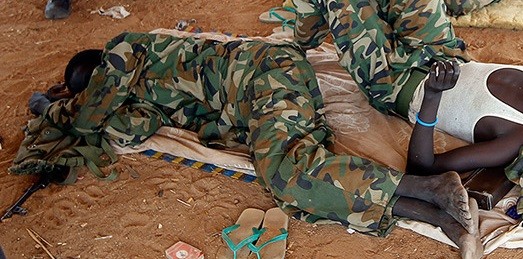This report summarizes recent developments in South Sudan’s continuing civil war and is based on information received by Radio Tamazuj. It is meant to provide a general overview of major events and conflict trends rather than detailing the specifics of conflict events, which are usually difficult to verify.
Conflict situation overview, 7 June 2015:
There were few reported clashes along frontlines in Upper Nile and Jonglei states over the last week. Fighting between SPLA-Juba and SPLA-IO continued in Unity State, however, making it difficult for the government to resume oil production at fields that it said it captured in its April/May offensive.
Significant levels of other types of violence affected parts of the government-controlled Bahr al Ghazal region in particular, including inter-clan clashes and banditry.
There was heavy fighting between clans in Rumbek East County as well as elsewhere in Lakes State. A group of NGO workers were ambushed in Tonj South County of Warrap State. Several people were killed in incidents in Jur River County of Western Bahr al Ghazal State including in a reported cattle raid, and group of SPLA soldiers were ambushed by suspected insurgents in Wau County.
Casualties in Lakes State have been particularly high.
An armed group that briefly overran the Bazia outpost in Wau County on 31 May withdrew from the village. Fighting between the Wau County insurgents and SPLA-Juba has been limited and fairly low-scale. Although SPLA-IO claims loyalty of the fighters in this area, Radio Tamazuj has not been able to contact any of the group’s field commanders.
In spite of the limited nature of the violence so far, conflict in the county has the potential to complicate an already tense political situation stemming from the Wau Crisis of 2012.
Elsewhere in the region, fuel and food shortages at markets in Abyei and Warrap point to a likely source of social unrest. The Warrap State government has complained of illegal checkpoints along supply routes to the state, driving up prices. Sources in Aweil speak of a flow of refugees northward into Sudan owing to hunger. New price controls are reported by traders in many parts of the country.
The situation in the Mundri area of Western Equatoria stabilized compared to the previous week, according to the state governor, but remains tense. In Eastern Equatoria, four people were killed and eight were wounded in communal violence in Hiyala Payam in Torit County, according to the county commissioner. Dozens of homes were set ablaze.
Leadership of the government in Juba have been preoccupied over the past week in part by a visit by the previously exiled SPLM ‘Group of Ten’ (G10). Also in Juba, tensions are currently high within the national government over management of the Letters of Credit system for disbursement of what remains of the inflow of hard currency, mostly from oil revenue and loans.
Photo: SPLA soldiers rest near an oil field in Unity state, 2012 (Reuters)
Related:
South Sudan conflict situation overview, 29 May 2015




